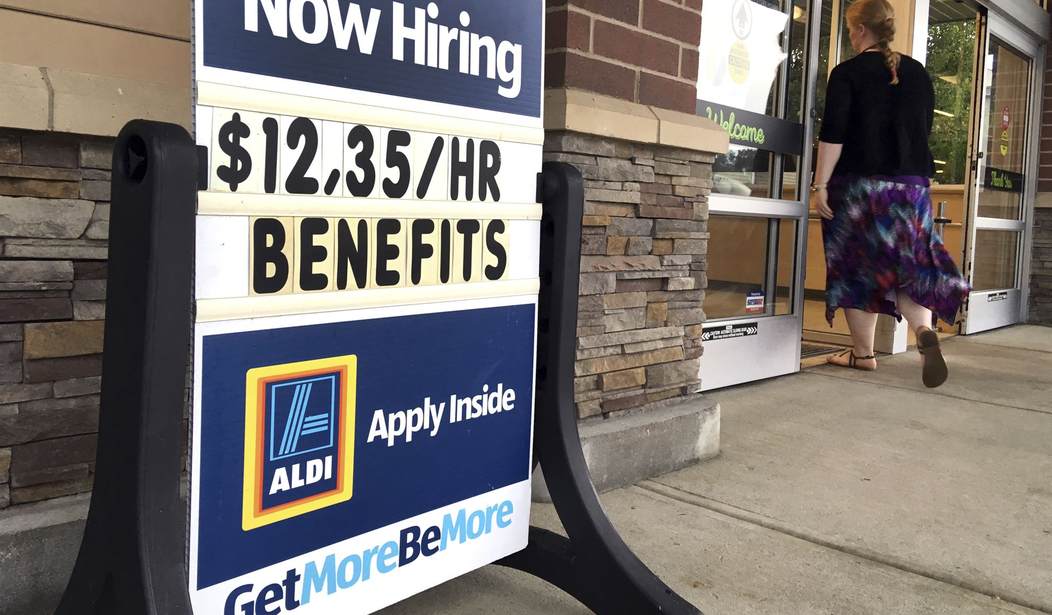The U.S. Labor Department released its jobs report for September on Friday morning showing unemployment rate fell to 3.5 percent with the addition of 263,000 jobs — but that good-looking number doesn't tell the whole story of economic damage still raging beneath the surface.
Payroll employment increases by 263,000 in September; unemployment rate edges down to 3.5% https://t.co/ZwrVfLdH2b #JobsReport #BLSdata
— BLS-Labor Statistics (@BLS_gov) October 7, 2022
One number in particular confounded economists and market-watchers: a shrinking labor participation rate down to 62.3 percent. According to Friday's report, there were 57,000 fewer American in the labor force in September compared to August despite COVID-era stimulus no longer padding families' bottom lines and the market wiping out 401k balances as inflation continues to rage.
Even those in the mainstream media, such as WaPo financial columnist Heather Long, noted that September's report showed the economy moving in the wrong direction.
Not good: The unemployment rate fell to 3.5% largely because the labor force declined (meaning fewer people got jobs or were searching).
— Heather Long (@byHeatherLong) October 7, 2022
The labor force participation rate fell to 62.3%, down slightly from 62.4% in August.
It's just one month, but this isn't the right direction
The labor force participation rate in September remained — despite President Joe Biden's bragging about his best-ever "build back better" recovery — below its February 2020 pre-COVID rate by more than one percent.
Recommended
What's more, the prime-age labor participation rate — for Americans 25 to 54 years old — also ticked down in September showing that decreasing labor force participation is not attributable to an aging workforce or delayed entry but rather due to widespread economic issues ushered in by the Biden agenda.
Just one month but not good to see prime-age labor force participation rate move down (to 82.7% vs. 82.8% prior) pic.twitter.com/ki8sjTJ7dm
— Liz Ann Sonders (@LizAnnSonders) October 7, 2022
That is, American workers are still not "back," and the report also shows that their wages are definitely not "better" than before Biden took office.
Wage growth showed average hourly earnings for Americans rising just 0.3 percent in September, up a total of five percent for the year ending in September — but that number continues to lag behind inflation. Americans — despite what Biden, his party, and the mainstream media will try to claim — are still experiencing around a 3 percent drop in their real wages as a result.
There were also 5.8 million Americans not in the labor force who want a job in September — 800,000 more than there were in February 2020 before COVID hit the U.S. economy. In another indictment against Biden's supposedly inclusive and booming economy, the number of Americans who believed that no jobs were available for them increased by 119,000 to 485,000 in September.
Looking at jobs in different sectors of the economy, leisure and hospitality led the growth in September, but still remains more than one million jobs below what the industry had before COVID — again, not built back or better.
The September jobs report sent stock futures into triple-digit losses due to the drop in labor force participation and that good-looking headline number that's likely to spur more interest rate increases from a Federal Reserve that's become increasingly hawkish under Chairman Jerome Powell as he looks to get inflation down to a goal of just two percent.
??+263K jobs added last month. Unemployment falls to 3.5%?? Job market strong enough for the Federal Reserve to keep raising interest rates and draining money out of the economy.
— Dagen McDowell (@dagenmcdowell) October 7, 2022

























Join the conversation as a VIP Member